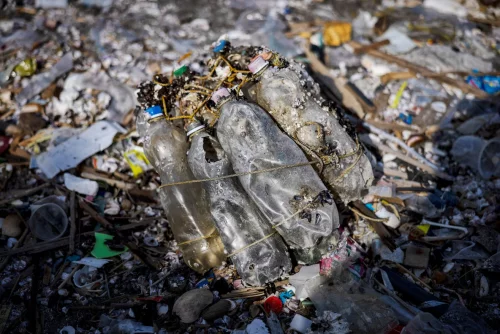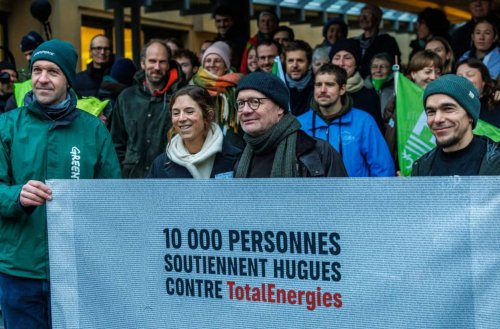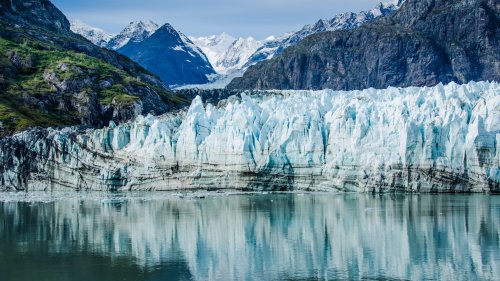In early June 2022, the Working Group "Environmental Security" at the National Council for the Recovery of Ukraine from the effects of the war identified five priority areas in the field of environmental security.
What are the areas in question, what problems each of them contains, as well as what proposals and ways to solve them - read in the material EcoPolitics.
Direction 1. Reforming public administration in the field of environmental protection
In general, three main problems have been identified in this area.
The first problem is that policy formulation and implementation, public administration and control in the industry are ineffective and do not reduce pollution and environmental damage.
Therefore, the lack of proper control leads to a neglected state of the environment. Without the creation of a modern State Inspectorate for Environmental Protection (SIEP), it is impossible to effectively, efficiently and methodically correctly calculate the damage caused to the environment as a result of hostilities.
There is no developed package of bylaws for the implementation of the bill 3091, there are no manuals for the training of inspectors by analogy with the training of patrol police, there is no detailed terms of reference for the development of information and analytical system SEIP.
To solve this problem, it is proposed to introduce new principles, principles of modern transparent effective, environmentally and business-friendly state environmental control, with a high percentage of public confidence in control bodies, to eliminate existing gaps and conflicts in legal and institutional control mechanisms.
This goal can be achieved in three stages. At the first stage, it is necessary to introduce new legal and organizational principles of environmental control, as well as to develop and adopt methodologies for determining environmental damage.
The second stage involves the implementation of three tasks: 1) institutional and personnel reform and the creation of a new body of state environmental control; 2) determining the damage to the environment from the war and determining the method of compensation; 3) increase of criminal and administrative liability for illegal actions against the environment, as well as introduction of criminal liability for interference in the activities of environmental inspectors.
In the third stage, it is proposed to implement the EU Directive "On Environmental Responsibility" into national legislation.
Achieving the goal will lead to a high level of trust of citizens and businesses in the already existing reformed control body. The number of appeals from citizens and businesses due to corruption and other offenses by the new control body will also decrease.
Other issues that need to be addressed include:
- it is necessary to involve leading Ukrainian and foreign scientists to develop innovative methods and approaches for the restoration of contaminated areas and their further application;
- the needs of the population in obtaining the correct ecological information, in formation of ecological culture increase;
With this in mind, it is planned to develop an Interdepartmental Program "Environmental Education and Information for Sustainable Development of Ukraine", as well as to create a system of information and interdepartmental communication to help raise awareness.
- the inability of the relevant ministry to pursue a nationwide coordinated environmental policy due to the lack of territorial offices of the ministry in the regions;
Therefore, it is proposed to develop and approve an updated structure of the ministry and make the transition to it.
- the need to improve the procedure of strategic environmental assessment (SEA) and ensure the effective implementation of the SEA of state planning documents, in particular related to the restoration of Ukraine from the effects of war.
To this end, it is necessary to improve the legislation in the field of SEA, create a register of SEA and establish responsibility for violations of SEA legislation and give the State Coinspection the authority to state supervision over its observance.
- for the war and postwar period, the EIA was suspended. Therefore, reconstruction can take place without complying with environmental legislation.
To solve the problem, it is recommended to: 1) collect the main problems with the EIA in Ukraine that arose in the public, business and government before the war, as well as take into account new ones that arose during the war; 2) to analyze the approaches to EIA in different countries of the world and their applicability to the realities in Ukraine
Another urgent problem is inconsistency of the monitoring system with the information needs of public administration , informing the population about the state of the environment, prevention and response to emergencies.
Finally a new solution is needed limited and inefficient environmental and economic instruments , which do not meet the needs of public administration in the field of environmental protection.
Direction 2. Climate policy: prevention and adaptation to climate change
First of all, the problem is high carbon intensity of the economy. To address it, it is proposed to implement an effective and consistent policy to reduce greenhouse gas emissions, consistent with the EU's climate goals.
No less a problem low adaptability and resilience of social, economic and environmental systems to climate change. To address this issue, it is proposed to develop and implement sectoral and regional, local vulnerability assessments to the effects of climate change and appropriate adaptation action plans.
One of the tasks in the national plan is to create an innovation center of technologies to mitigate the effects of climate change and the climate fund.
Direction 3. Environmental safety and effective waste management
Problematic issues in this direction are identified as follows:
- Critical state of ecological safety in Ukraine.
- A significant amount of waste generated as a result of hostilities and damage to waste management facilities, as well as disruption of logistics links in the field of waste management.
- Imperfect waste management infrastructure and low level of waste recycling.
- High levels of industrial pollution in the absence of proper emission controls.
These problems are to be solved in three stages from June 2022 to December 2032.
Direction 4. Balanced use of natural resources in conditions of high demand and limited opportunities
The urgent problem today is depletion of natural resources due to their unsustainable use and lack of formed reserves of natural resources exacerbated by inefficient governance and the negative effects of climate change.
The issue also needs close attention deterioration of natural resources and their ability to self-healing due to environmental pollution.
One of the tasks to solve this problem is to complete the preparation of the Water Strategy of Ukraine, make changes to the National Target Program "Drinking Water of Ukraine" for 2022-2026 to eliminate the effects of hostilities, as well as the preparation of various sectoral programs and plans.
Inadequate public administration in the field of nature management , which leads to non-compliance or disregard for environmental legislation, is also a significant problem that needs to be addressed.
Finally, it is worrying non-compliant with the goals of environmental policy land regulatory framework , which is not able to ensure the implementation of the objectives prescribed in the regulations of environmental protection.
Direction 5. Conservation of natural ecosystems and biological diversity. Restoration and development of protected areas and facilities
The main problem is insufficient share of protected areas and their integration into a single network for sustainable development.
Therefore, the national plan envisages the creation of a representative and effective-managed network of protected areas, which will be integrated into the network of protected areas of the EU.
It should be noted that the Working Group "Environmental Safety" includes more than 200 participants - experts, leading scientists in the field of environmental protection, government officials, international technical assistance projects, civil society organizations and businesses.
They develop proposals for a national plan on environmental safety, conservation, biological and landscape diversity, reproduction and sustainable use of natural resources, formation and implementation of effective climate policy, waste management system, environmental monitoring, digital transformation, environmental reform, implementation of European directives.
Given the importance of environmental safety and related issues to the public and the large number of experts working on them, it seems necessary to invite media representatives to create an appropriate media background for the working group.





